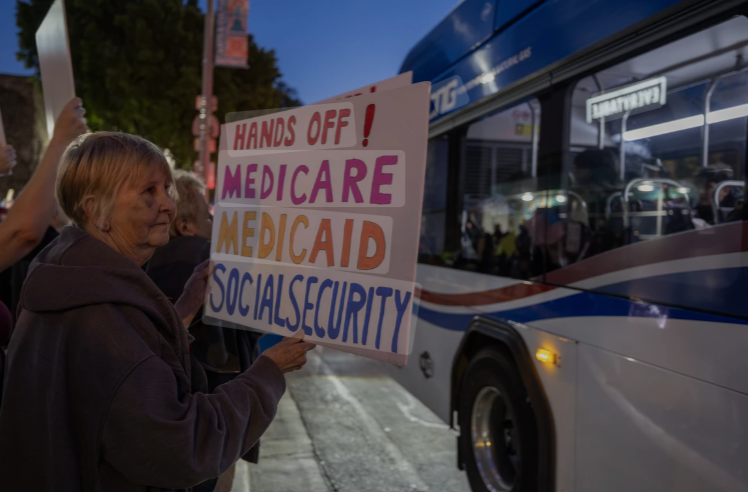A new in-depth analysis released Friday has revealed that former President Donald Trump’s proposed changes to Social Security operations will place a significant and harmful burden on millions of Americans—especially seniors, disabled individuals, and those living in rural communities. The implications are far-reaching and represent a calculated move that undermines one of the most vital safety nets in American society.
Under these proposed changes, individuals who receive Social Security benefits will no longer be able to update their banking information over the phone through a simple verification process. Instead, the Social Security Administration (SSA), under Trump’s directive, is introducing a cumbersome multi-factor authentication process. Beneficiaries must now generate a one-time PIN or physically visit a Social Security field office to make critical changes—adding unnecessary barriers to those who often need the most support.
The Center on Budget and Policy Priorities (CBPP), a respected nonpartisan policy think tank, warns that this shift will impact nearly 2 million Americans who may be forced to make in-person trips to SSA offices. The burden will fall hardest on those with limited mobility, no internet access, or long travel distances. In fact, a previous CBPP study found that more than 6 million beneficiaries live over 45 miles from the nearest SSA location.
While SSA officials claim the changes are intended to reduce fraud, the agency’s own data tells a different story. According to internal figures, fraud involving direct deposit information represents less than one-hundredth of one percent of all Social Security benefits—an insignificant number used as a smokescreen for harmful policy.
CBPP’s analysis states plainly: “The new PIN code requirement will be impossible for many beneficiaries to meet.” Many seniors and disabled Americans do not have smartphones, computers, or high-speed internet, and are unfamiliar with the technology required to meet the new standards. Further, if a person does not already have an SSA online account, they must hang up, create one on their own, and then call back—an arduous process made worse by SSA’s current staffing shortages and long wait times. The average callback delay is now 2.5 hours.
Alex Lawson, Executive Director of Social Security Works, underscored the danger of these changes. “The Trump administration and its allies are waging a full-scale war on Social Security. They are intentionally driving millions into overburdened field offices while slashing the workforce that serves them,” Lawson told Common Dreams.
Indeed, Trump’s plans include not just procedural obstacles, but aggressive cuts to SSA personnel. With the backing of billionaire advisor Elon Musk and the so-called Department of Government Efficiency, the Trump agenda is deliberately shrinking the government workforce. The New York Times estimates SSA staffing has already been cut by 5%, with internal targets suggesting a devastating 17% reduction may be on the horizon.
Meanwhile, SSA employees are sounding the alarm. A recent NPR report showed how staff are already overwhelmed, struggling to meet the needs of over 70 million Americans—an impossible task with diminishing resources and escalating demands.
The takeaway is clear: These are not administrative reforms. They are systemic attacks designed to weaken Social Security, frustrate beneficiaries, and pave the way for privatization or deeper funding cuts. When Americans cannot access their benefits—whether due to long wait times, confusing requirements, or inaccessible offices—that is not just an inconvenience. It is a cut.
These actions represent a serious threat to a foundational American promise: that after a lifetime of work, citizens will be treated with dignity and receive the benefits they earned.



